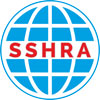
Jari Martikainen
University of Eastern Finland, Kuopio, Finland
Toward the end of the 20th century, scholars in various fields of science started to challenge the dominant position of discursive research methods based on verbal materials. This pursuit was motivated by the inadequacy of positivistic science in addressing the sphere of visual, sensory, embodied, and emotional experiences. Inspired by the visual, material, sensory, and emotional turns in social sciences, social science researchers began to develop and apply arts-based research methods aiming to diversify the understanding of the social world provided by discursive research methods. The study at hand discusses the contribution of arts-based research to social science research, based on literature on arts-based research. In particular, the study concentrates on visual arts-based research. At first, it sketches the background of arts-based research in social sciences and summarizes briefly the scope of arts-based research in social work, management, and organizational studies, as well as sociology. Then the study defines arts-based research and discusses the contribution of visual arts-based research methods to social science research, paying attention to their limitations, as well. Finally, conclusions are drawn and suggestions for future research are made. The study shows that arts-based methods may motivate and encourage participants to reflect on the topic of the research and share their thoughts and feelings. In addition, arts-based research may appeal to emotions and lived-experiences providing a more holistic insight into the participants’ experiences. Finally, arts-based methods seem to promote critical thinking.
Keywords
Arts-Based Research, Visual Research Methods, Social Sciences, Experience, Empathy, Participation
Full Article is available at https://dx.doi.org/10.20319/pijss.2019.52.323345





